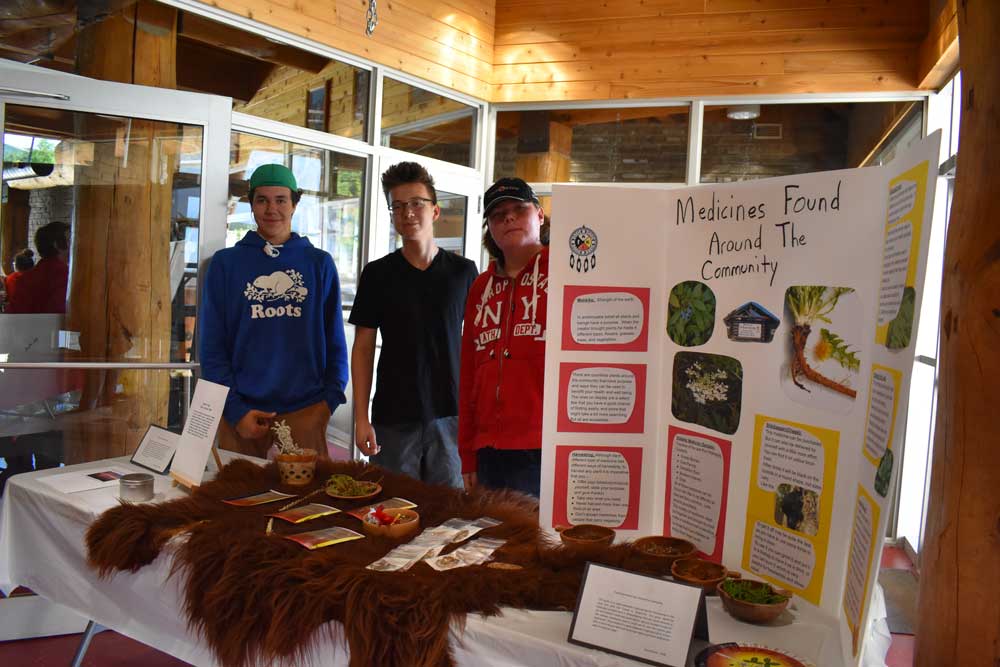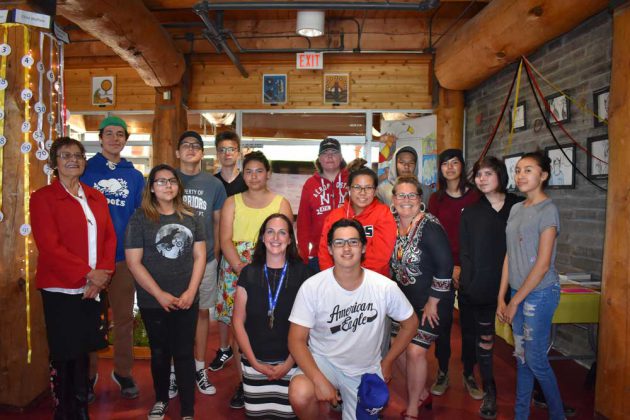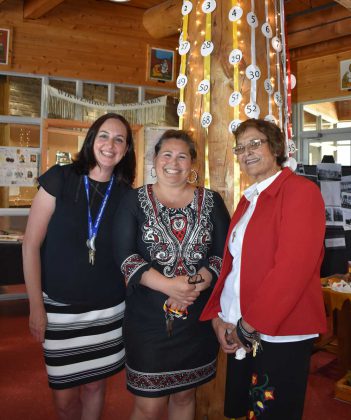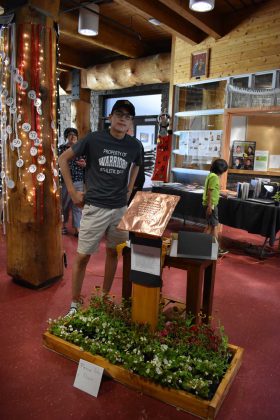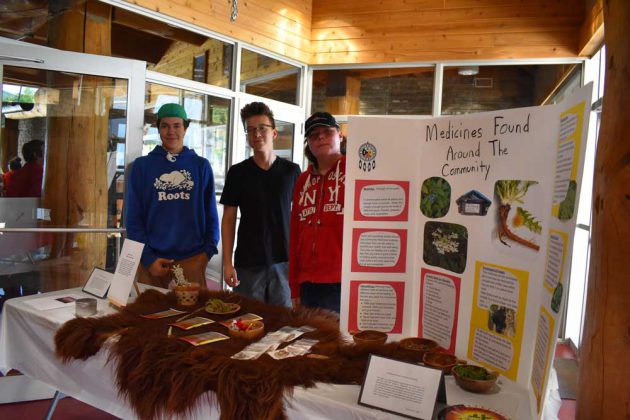WIIKWEMKOONG—On Wednesday, June 20 Wikwemikong High School hosted an open house in which student projects, aimed at addressing a number of the Truth and Reconciliation Commission of Canada’s (TRC) 94 calls to action, were exhibited. The projects highlighted the students’ understanding about truth and reconciliation and addressed those calls to action that related to the loss of language and culture; missing children and burial information; and health.
Teachers Theresa Hoy, Valerie O’Leary and Samantha Cooper were the teachers spearheading the project, which they began planning collaboratively over a year ago. The exhibit was a collective project of their three classes: Native language, Native arts, and history.
Addressing call to action number 74, in which the TRC calls “upon the federal government to work with the churches and Aboriginal community leaders to inform the families of children who died at residential schools of the child’s burial location, and to respond to families’ wishes for appropriate commemoration ceremonies and markers and reburial in home communities where requested,” Ian Dokum created a monument and memorial garden for the children who never made it home, incorporating elements of the medicine wheel. He encouraged exhibit visitors to take a flower “in memory of the many children that attended residential schools and have passed during their time at residential schools.” In doing so, they can take the flower home and plant it as a ceremony of commemoration to one of the missing children.
Darlene Mandamin, addressing call to action number 14, created beautifully adorned mason jars which contained words in Anishinaabemowin as a symbol of how the “preservation, revitalization, and strengthening of Aboriginal languages and cultures are best managed by Aboriginal people and communities.” The jars, which can be purchased by contacting Ms. Mandamin through the high school, are being sold as a fundraising initiative to fund language preservation.
The many exhibits were incredibly well thought out, creative, and impactful. Exhibits included mixed media presentations; drawings; poetry; videos; traditional arts such as beadwork, leatherwork and paintings; sharing of traditional knowledge; as well as many resources relative to residential schools and the TRC itself.
Exhibit goers were moved by the work that went into the exhibit and expressed how, seeing the effects of residential schools through the work of the students, impacted them in a way they hadn’t felt before.

